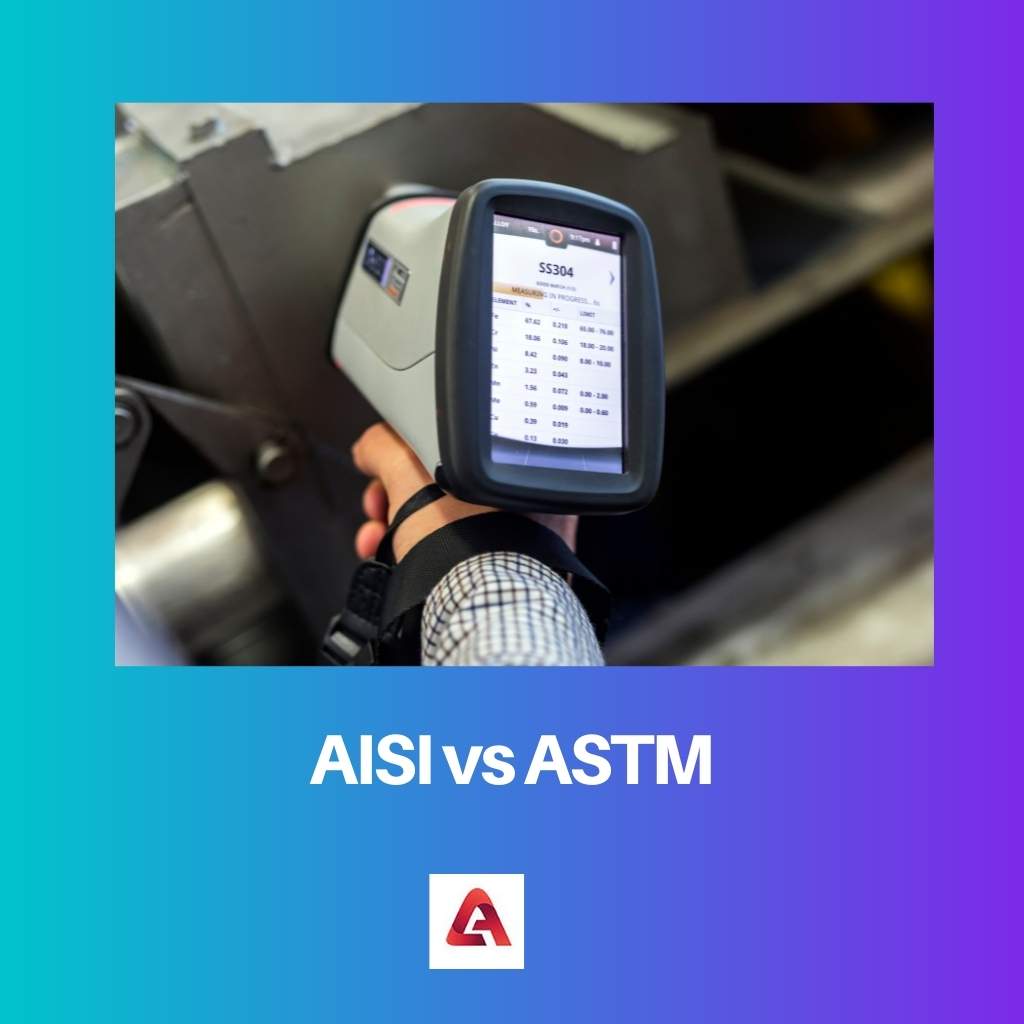These institutions and agencies set rules and regulations and discuss requisite changes and alterations of the domain. Two such main institutions are AISI and ASTM.
Key Takeaways
- The American Iron and Steel Institute (AISI) focuses on steel industry interests, while the American Society for Testing and Materials (ASTM) develops standards for materials, products, and systems.
- AISI classifications describe the chemical composition of steel, whereas ASTM standards encompass a wide range of materials and industries.
- Both organizations work together to ensure the quality and safety of materials used in various applications.
AISI vs ASTM
AISI is an organization that develops and maintains standards for various industries. It is specifically focused on standards for the steel industry. ASTM is an organization that develops and maintains standards for various industries. ASTM covers a wider range of industries and materials.

It operates mainly for the expansion of the iron and steel industry in specific regions like North America and the United States of America.
Being an international institution, it has an association with over 140 countries in the world. The headquarters of ASTM is in Pennsylvania.
Comparison Table
| Parameters of Comparison | AISI | ASTM |
|---|---|---|
| Full form | American Iron and Steel Institute | American Society for Testing and Materials |
| Aim | To create awareness among the mass about the fashion, changes, and basic information of the iron and steel industry | To test, classify and specify the products and materials, generate awareness and guidance for both the ends – suppliers as well as consumers |
| Principle | Build foundation for the industries of iron and steel | Creation of standards of any product production and development |
| Products | Steel and iron | Wide range of products and services like non-ferrous metal products, fossil fuels, petroleum products, paints, electrical, nuclear, electronic, aromatics, rubber, textiles, plastic, and others |
| Headquarters | New York | West Conshohocken, Pennsylvania, northwest of Philadelphia |
What is AISI?
AISI stands for American Iron and Steel Institute. It is the oldest association in trade. It is set in the United States of America. AISI had existed from the year 1855 and gained its presence from the year 1908.
The main focus of this institution has always been on the production and standards of pig iron. American Iron and Steel Institute is a body where discussion and alterations related to the details of the iron and steel industry are done.
AISI aims to create awareness among the masses about the fashion, changes, and basic information of the iron and steel industry. In general, it educates people. AISI was initially named the American Iron and Steel Association (AISA).
It even designates certain grades of carbon and alloy products. The headquarters of AISI is in New York.
What is ASTM?
ASTM stands for American Society for Testing and Materials. It is one of the oldest associations in trade. It was established in the late 1800s.
American Society for Testing and Materials is involved in various kinds of substances and components like non-ferrous metal products, fossil fuels, petroleum products, paints, electrical, nuclear,
electronic, aromatics, rubber, textiles, and plastic components.
The main job of ASTM is to produce methods for testing, classifications, and specifications of the products and materials, awareness, and guidance for both ends – suppliers as well as consumers.
ASTM has produced over 12000 standards and has a huge coverage of products. It has an association with over 30,000 experts in the technical domain required.
Main Differences Between AISI and ASTM
- AISI standards operate in North America and the United States, while ASTM standards are used by over 140 countries in the world.
- AISI aims to expand and grow the steel and iron industry of North America, while ASTM focuses on the regulation, development, and production of different products and materials.
- https://onlinelibrary.wiley.com/doi/abs/10.1002/mawe.201800045
- https://link.springer.com/article/10.1007/s00170-015-7751-5

It’s great to finally understand what each organization does and how they differ.
The comprehensive comparison table was particularly helpful. It’s good to have these details in one place.
This is valuable information for professionals in these industries. The article is clear and informative.
The comparison table and references make this a very reliable source of information.
The depth of knowledge in this post is impressive and clearly laid out. Great job putting together this information.
The level of detail in this article is exceptional. Really got to know the purpose and reach of both organizations.
It is interesting to see how two important organizations operate and their focus on different areas of the industry. I have learned a lot from this article.
This is an important information for those who work in these fields. It clearly explains the differences between these organizations.